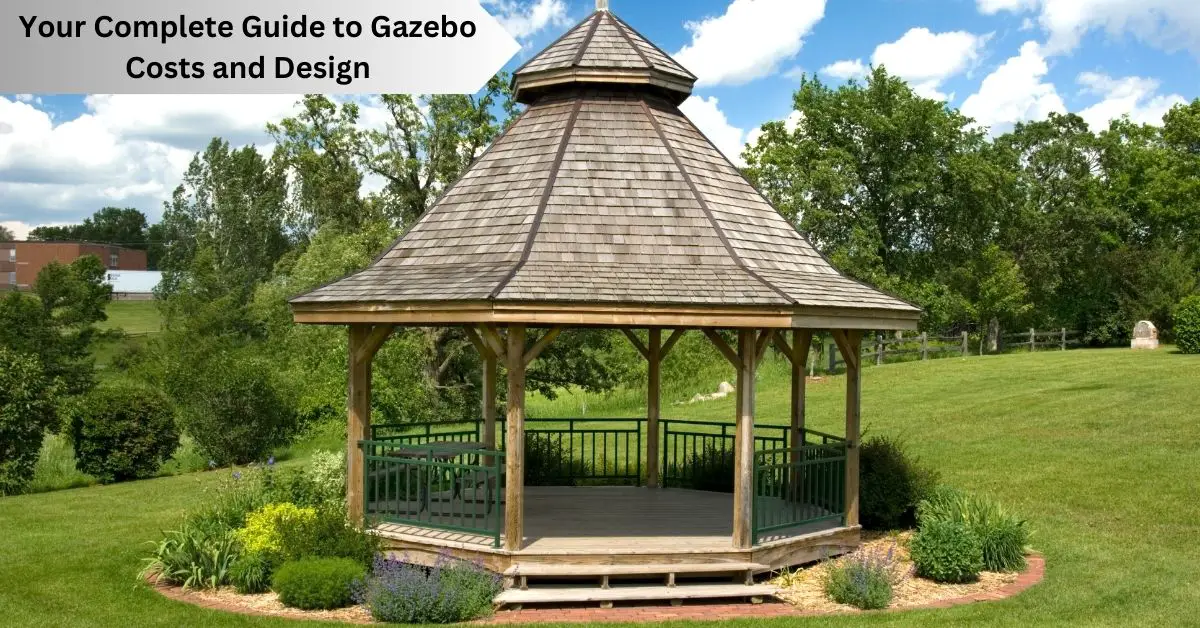Welcome to our gazebo cost guide! Complete Guide to Gazebo Costs and Design. A gazebo is a great addition to any outdoor space, providing a comfortable and stylish place to relax, entertain, or host events. However, the cost of building a gazebo can vary depending on several factors, such as size, materials, design, and additional features.
In this guide, we’ll explore the different factors that can impact the cost of a gazebo, as well as the different materials, designs, and features you can choose from. Whether you’re planning to hire a professional or do it yourself, we’ll help you understand the costs associated with building a gazebo, as well as the ongoing maintenance required to keep it in good condition.
This guide will help you navigate the world of gazebo design and costs, providing you with the information you need to make informed decisions. Whether you’re a DIY enthusiast or you’re planning to hire a professional, we’ll help you understand the costs and considerations that come with building a gazebo.
Gazebo cost guide: If you’re considering building a gazebo, it’s important to understand the different factors that can impact the gazebo’s cost. From the materials you choose to the size and design of the structure, there are many decisions to make when planning your project.
Explanation of what a gazebo is
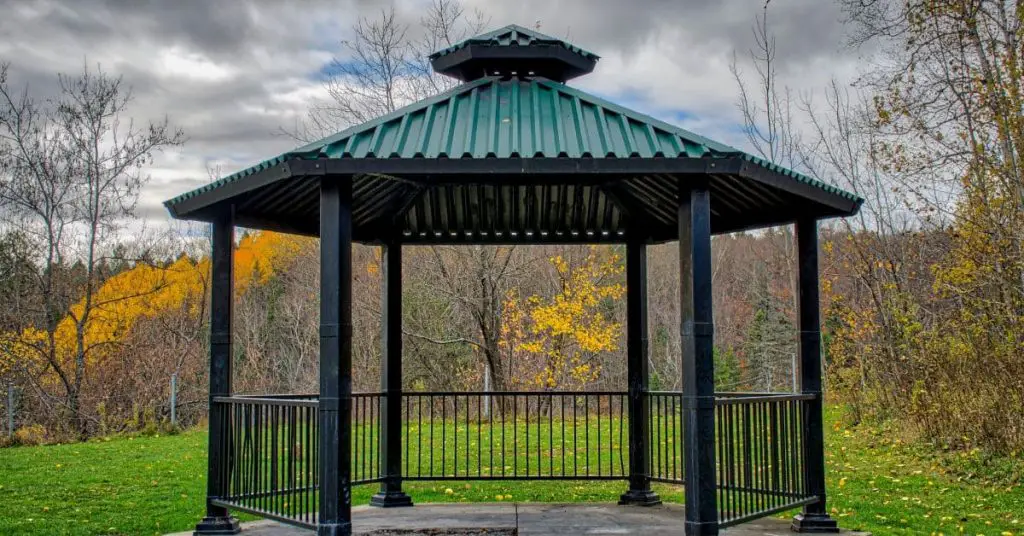
A gazebo is a freestanding, open-sided outdoor structure that is typically round, octagonal, or hexagonal in shape. It is often used as a place for outdoor gatherings, such as picnics, parties, or weddings.
Gazebos can be made from various materials, including wood, metal, and vinyl, and they can be designed to fit a range of architectural styles, from traditional to modern. They are popular additions to gardens, parks, and other outdoor spaces, providing shade, shelter, and a decorative focal point.
Complete Guide to Gazebo Costs and Design
A gazebo is like a little outdoor room with a roof and open sides. It’s a nice place to eat, relax or hang out during hot weather. You can decorate it with flowers and climbing plants to make it look pretty. Some people even put a grill, fire pit, or hot tub in it. If you want to buy a gazebo, it will cost you some money.
The average price is $8,500, but it can be more or less depending on the materials, size, design, and where you live. The installation also costs money, and that varies depending on where you are too.
Purpose of the guide
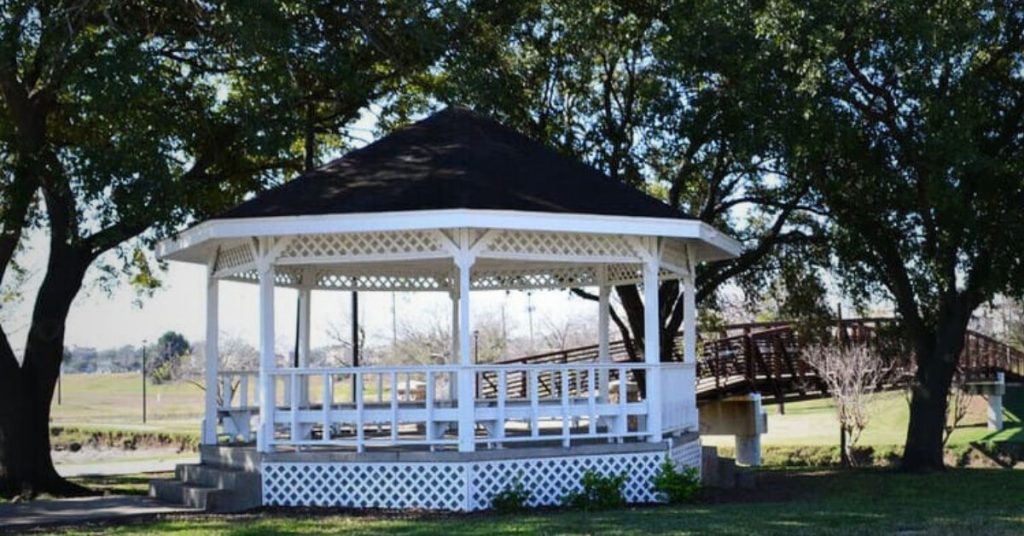
The purpose of this guide is to provide you with valuable information on gazebo costs and the factors that affect those costs. Whether you’re considering building a gazebo or hiring a professional, understanding the different options and costs associated with each will help you make an informed decision that fits your budget.
With this guide, you’ll learn about the average cost of pre-built and custom-built gazebos, the different sizes available, the materials commonly used, the optional features you may want to consider, and the pros and cons of hiring a professional versus doing it yourself.
By the end of this guide, you’ll better understand the cost factors to consider when planning to build a gazebo and be equipped to make the best decision for your needs and budget.
Factors Affecting Gazebo Cost
The cost of a gazebo can depend on a few things. The gazebo size is one factor, as a bigger gazebo might cost more than a smaller one. The material used to make the gazebo can also make a price difference, as some materials are more expensive than others.
The design and style of the pavilion can also impact cost, as a more unique or intricate design may cost more than a simple one. Finally, any extra features or add-ons like lighting or screens can also affect the cost of the gazebo.
By considering these factors, you can better understand how much you might need to spend to get the gazebo you want.
Size of the Gazebo
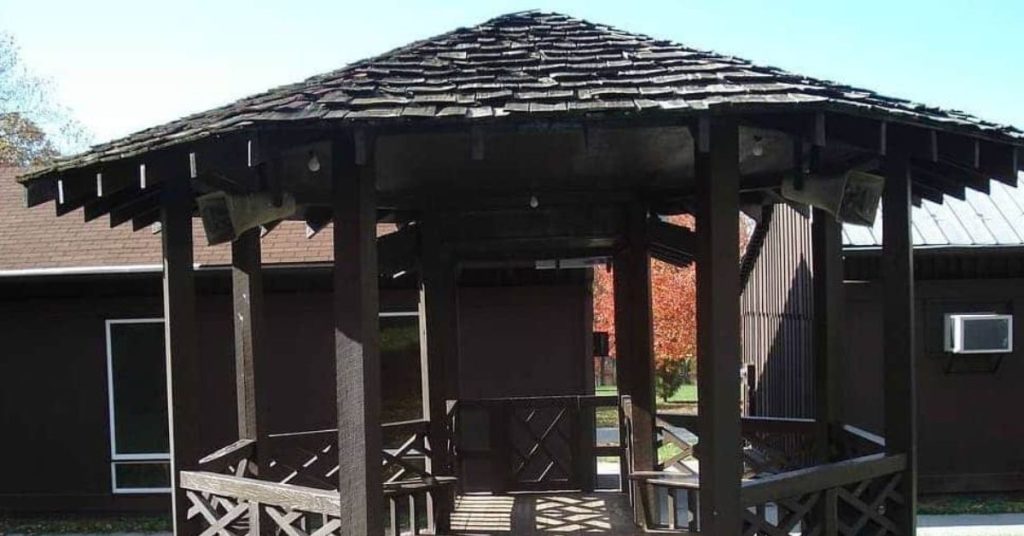
The size of a Gazebo can vary greatly depending on its intended use and design. Some Gazebos are small and cozy, perfect for an intimate outdoor space, while others are larger and more spacious, able to accommodate larger groups of people. Common sizes for Gazebos range from 8 to 16 feet in diameter, although custom designs can be larger or smaller.
The important thing is to choose a size that fits your specific needs and the space available in your backyard or outdoor area. Ultimately, the size of your Gazebo should be proportional to the size of the area it will occupy and should be large enough to accommodate the activities you have in mind comfortably.
Material Used
The material used for a Gazebo is essential. It affects how long it will last, how much work it will need to look nice, and what it will look like. Some common materials used for Gazebos are wood, metal, vinyl, and canvas. Wood Gazebos look natural and can be painted or stained to match the outside area.
Metal Gazebos are strong and can look fancy or modern. Vinyl Gazebos are easy to care for and come in many colors and styles. Canvas Gazebos are light and easy to move, good for use sometimes. The material you choose for your Gazebo will depend on what you want, how much money you have, and what you like the look of.
Style and Design
A Gazebo can be made in different styles and designs. They can look old-fashioned or new, and each one can be unique. Some Gazebo styles are Victorian, Colonial, Asian, or Mediterranean. The way a Gazebo looks can change, with choices like open-air, enclosed, or a mix of both.
You can also add benches, swings, lights, and fans to make it even better. It’s important to choose a style and design that you like, and that fits in with the outside area.
Features and Add-ons
Gazebos can be made better by adding different things to them. You can add benches, swings, tables, and storage units. Lighting can be added to make it look cozy and nice. Screens, curtains, or blinds can also be added to give privacy and keep bugs away.
If you like cooking outside, you can add grills, ovens, and refrigerators to your Gazebo. You can also add fans and heaters to make it comfortable all year. You can add many things to a Gazebo to improve it, and it can become an excellent place to relax, have fun, and eat outside.
Gazebo Material and Cost
The cost of a Gazebo can depend on what it is made of. A wooden Gazebo is usually more expensive than a metal or vinyl Gazebo because the wood is costly and requires more work. Metal Gazebos made of aluminum or steel are usually less expensive than wooden Gazebos and are easier to take care of.
Vinyl Gazebos are less expensive than wooden and metal Gazebos and need less maintenance. Canvas Gazebos are usually the cheapest, and they are suitable for use only sometimes. When picking what material to use, you should consider the price, how much care it needs, and how long it will last.
Wood Gazebo

Wooden gazebos are pretty and classic-looking outdoor structures. They can remind you of romantic books or formal dresses. But, they need lots of maintenance because insects and natural weather can damage the wood. You might need to use chemicals to keep the bugs away.
If the wood gets chipped or rough, you must sand it down or put on a new coat of stain. Building a wooden gazebo can cost anywhere between $5,200 to $7,200. Common types of wood used for gazebos include Pine, Hardwood, Redwood, Cedar, and Bamboo.
Metal Gazebo
Metal gazebos are long-lasting and don’t bend, break, or change shape over time like wooden gazebos. They may not have as many custom options as wood or vinyl gazebos, but they offer a modern and sleek appearance. Metal gazebos can be made of aluminum, wrought iron, or steel.
Aluminum is light and rust-resistant, making it easy to move and assemble. Wrought iron makes pretty designs but can rust. Steel gazebos are very tough and can survive tough weather, but they are not rust-resistant.
Vinyl
Vinyl is a flexible gazebo material designed to look like wood, brick, or metal. It might be more costly, but it can last a long time, requires very little maintenance, and can be used for many different styles.
The cost of building a vinyl gazebo can range from $5,250 to $8,750.
Gazebo Design and Cost
Gazebo design and cost can vary depending on a variety of factors. The size of the gazebo, the materials used, and the complexity of the invention are all factors that can affect the overall cost. In terms of design, there are many different styles to choose from, including traditional wooden designs, modern steel and glass structures, and even elaborate custom designs.
When planning a gazebo, it’s important to consider both the aesthetic appeal and the practical function it will serve, whether that be for outdoor entertaining, relaxation, or as a focal point in a garden or park. With careful planning and attention to detail, a well-designed gazebo can be a beautiful and functional addition to any outdoor space.
Open-Sided Gazebo
An open-sided gazebo is a type of outdoor structure that is typically roofed but without any walls or screens enclosing the space. These gazebos are popular for their ability to provide shade and shelter while still allowing for an open, airy feel.
They can be designed in a variety of styles and materials, including wood, metal, or vinyl, and are often used in gardens, parks, and outdoor spaces to provide a shaded gathering spot for relaxation, socializing, or enjoying nature.
While they do not offer protection from rain or wind, they are an ideal option for warm and mild climates, where they can create a comfortable and inviting outdoor space.
Screened Gazebo
A screened gazebo is an outdoor structure that provides protection from insects while still allowing fresh air and natural light to pass through. These gazebos have walls or screens enclosing the space, in addition to a roof, making them ideal for use in areas where flying pests are common.
Screened gazebos come in various sizes and styles, constructed from materials such as wood, metal, or vinyl. With added insect protection, a screened gazebo creates a comfortable and relaxing outdoor space for entertaining or enjoying the outdoors.
Features and Add-ons and Cost
When purchasing a gazebo, it’s essential to consider the features and add-ons that come with it. Depending on the brand, gazebos may include features like screened walls, lighting, and built-in benches. Add-ons like mosquito netting, privacy curtains, and heating systems can enhance your outdoor experience.
It’s important to note that these extra features and add-ons can increase the overall cost of your gazebo. However, they can also improve your gazebo’s functionality and make your outdoor space more comfortable and enjoyable.
Flooring
Gazebo flooring is an important consideration when designing or purchasing a gazebo. Flooring options can vary depending on the type of gazebo, its location, and its intended use. Wooden gazebos often have wooden or composite decking, while metal gazebos may have concrete, stone, or tile flooring.
Carpet or outdoor rugs can be added to enhance comfort and aesthetics. It’s essential to choose a flooring option that is durable, easy to clean, and complements the gazebo’s overall style and purpose.
Roofing
Gazebos have roofs, and it’s important to install them. If you don’t have a roof, it’s not a gazebo. The cost of the gazebo’s roof will depend on its size, material, and if it’s a single or double roof. Asphalt shingles are usually the least expensive option, while slate roofs can be the most expensive.
Other roofing materials include tile, wood, metal, glass, and polycarbonate.
Lighting
Lighting is an essential feature to consider when designing or purchasing a gazebo. Adequate lighting can enhance the ambiance and safety of the gazebo. Common lighting options include string lights, lanterns, chandeliers, and spotlights. Solar-powered lighting can be a cost-effective and eco-friendly option.
Choosing lighting complements the gazebo’s style and purpose while providing sufficient illumination for your activities is important.
Electrical Outlets
Electrical outlets are a useful feature to consider when designing or purchasing a gazebo. They can provide power for lighting, appliances, and electronics, enhancing the functionality and convenience of the gazebo.
It’s important to ensure that a licensed electrician installs the electrical outlets and comply with local building codes. Weather-resistant outlets and covers are recommended for outdoor use to ensure safety and prevent damage from the elements.
Furniture and Decorations
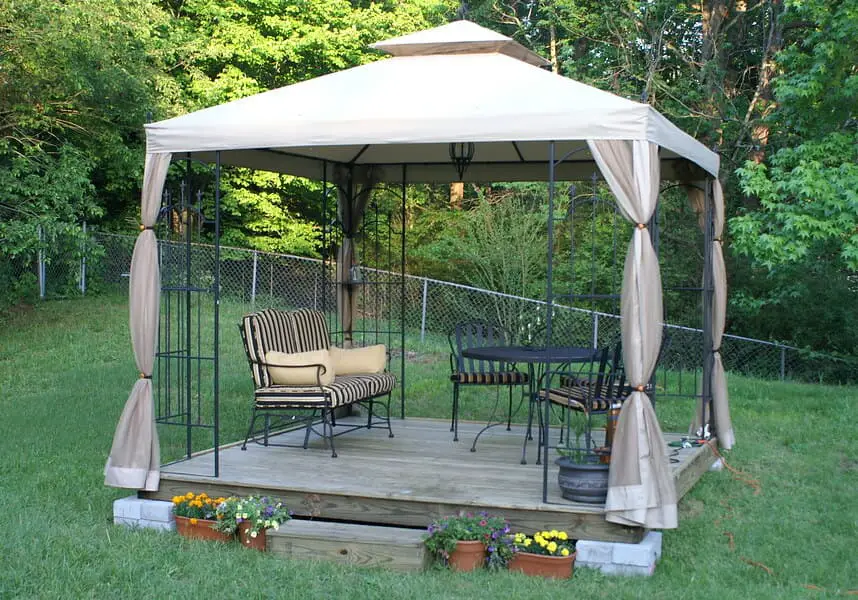
Furniture and decorations are critical elements in designing or accessorizing a gazebo. The choice of furniture will depend on the intended use of the gazebo and personal preference. Popular furniture options include chairs, tables, benches, and hammocks.
Decorative items such as cushions, curtains, and rugs can add color and texture to the space. It’s important to select furniture and decorations that are durable and weather-resistant to ensure they can withstand the elements and retain their appearance.
Gazebo Installation Cost
The cost of installing a gazebo can vary depending on several factors. The size, material, and features of the gazebo can affect the installation cost. Professional installation by a contractor or handyman can add to the overall cost. DIY installation can save on labor costs but may require specialized tools and skills.
It’s important to obtain several quotes from contractors and consider the value of their services before making a decision. Additionally, local building codes and permits may be required, adding to the total cost.
Professional Installation
Professional installation can ensure that a gazebo is installed safely and efficiently. It may involve hiring a contractor or handyman with experience in building gazebos. The cost of professional installation can vary depending on the size and complexity of the gazebo, as well as the local labor rates.
It’s important to obtain several quotes from reputable contractors and ensure they are licensed and insured. Professional installation can offer peace of mind and save time and effort in the long run.
Self-Installation
Self-installation of a gazebo can be a DIY project that can save on labor costs. It requires basic carpentry skills, tools, and some assistance, depending on the size of the gazebo. The process involves following the instructions provided by the manufacturer and may require additional research to ensure compliance with local building codes and permits.
DIY installation can be time-consuming and may require multiple days, especially for larger gazebos. It’s important to have a plan, follow safety precautions, and enlist help if necessary.
Gazebo Maintenance and Cost
Regular maintenance is necessary to keep a gazebo in good condition and extend its lifespan. The cost of maintenance can vary depending on the material and features of the gazebo. Wooden gazebos require periodic staining or painting, while metal gazebos may need rust treatment or repainting.
Maintenance costs may also include replacing damaged parts or repairing wear and tear. Proper maintenance can prevent more costly repairs in the long run and ensure the gazebo continues to look and function well.
Cleaning and Repairs
Cleaning and repairs are important aspects of gazebo maintenance. Regular cleaning can prevent the buildup of dirt, debris, and mold that can cause damage to the gazebo. For wooden gazebos, this can involve power washing, sanding, and applying sealant.
Metal gazebos may require rust removal or repainting. Repairs may include fixing damaged roofing, flooring, or structural components. The cost of cleaning and repairs can vary depending on the extent of the damage and the materials used in the gazebo’s construction. Regular maintenance can help prevent costly repairs down the line.
Seasonal Maintenance
Seasonal maintenance is important for gazebos, especially in areas with harsh weather conditions. Before winter, it’s essential to remove any debris from the gazebo and surrounding area and ensure the roof is secure.
It’s best to remove heavy snow from the roof in winter to prevent damage. In the spring and summer, it’s important to inspect the gazebo for any damage or wear and perform any necessary repairs or maintenance. These steps can help ensure the gazebo remains in good condition and lasts for many years.
FAQs
Q.1 How much does it cost to build a 12×12 gazebo?
Wondering about the price of a 12×12 gazebo? The cost of building one can differ based on the materials used. Typically, a 12-foot by 12-foot gazebo can cost anywhere between $6,150 and $10,200 (CAD 8,600 and CAD 14,000). Keep in mind that if you’re looking for a unique design, it’ll likely cost more than a basic vinyl gazebo.
Q.2 Is it cheaper to build a gazebo or buy one?
Building a wooden gazebo from the ground up will cost you about 33% less than purchasing and installing a prefabricated kit. These kits can cost upwards of $3,000, and having a professional install it will be even more expensive.
So, if you’re looking for the most budget-friendly option, building a gazebo yourself is the way to go when it comes to adding this permanent structure to your outdoor space.
Q.3 What is a good size for a gazebo?
If you’re looking for a gazebo for personal use such as meditation, yoga, or workouts, or for small family dinners in a compact backyard, the 8’x8′ or 10’x10′ size would be a great fit.
The 12’x12′ gazebo is perfect for intimate gatherings with the ability to seat a large family or a family of four, along with six guests comfortably. The 14’x14′ or 16’x16′ size is best for larger social events or business dinners, as it can comfortably accommodate 12-15 people.
Q.4 What maintenance does a gazebo require?
Maintenance depends on the materials used. Wooden gazebos may require staining and sealing periodically, while vinyl and metal options need less maintenance. Regular cleaning and inspecting for damage are essential for longevity.
Q.5 Can a gazebo increase my property value?
In many cases, a well-designed and well-maintained gazebo can enhance the appeal of your property, potentially increasing its value. However, the impact can vary based on factors like location and local real estate trends
Conclusion
In conclusion, gazebos can be a great addition to any outdoor space, providing a comfortable and attractive place to relax and entertain. The cost of a gazebo can vary widely depending on factors like size, materials, and features.
Professional installation can also add to the overall cost. Regular maintenance is important to keep the gazebo in good condition, and costs can vary depending on the extent of the work needed. With proper care and maintenance, a well-built gazebo can last for many years and provide enjoyment for all who use it.
We hope you will be well aware after reading this comprehensive guide. If you have any questions, feel free to comment below!

